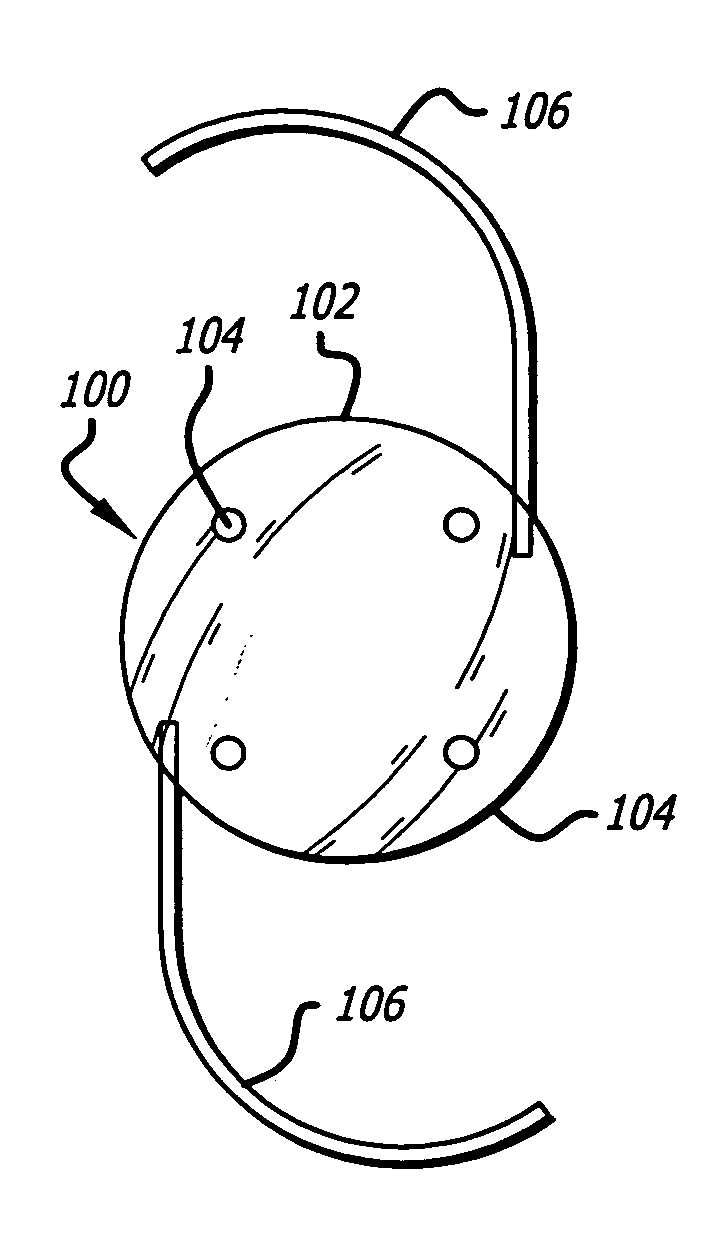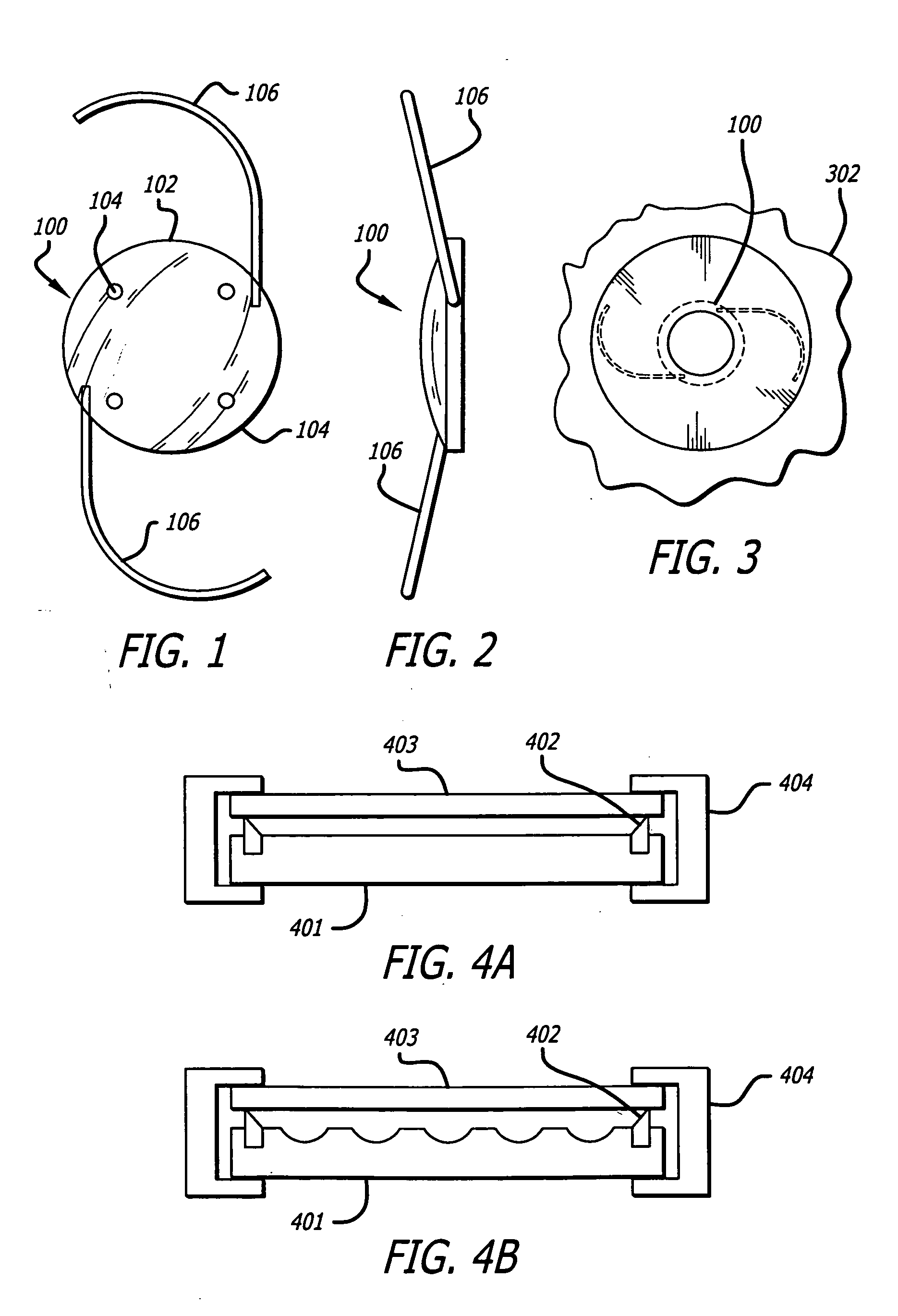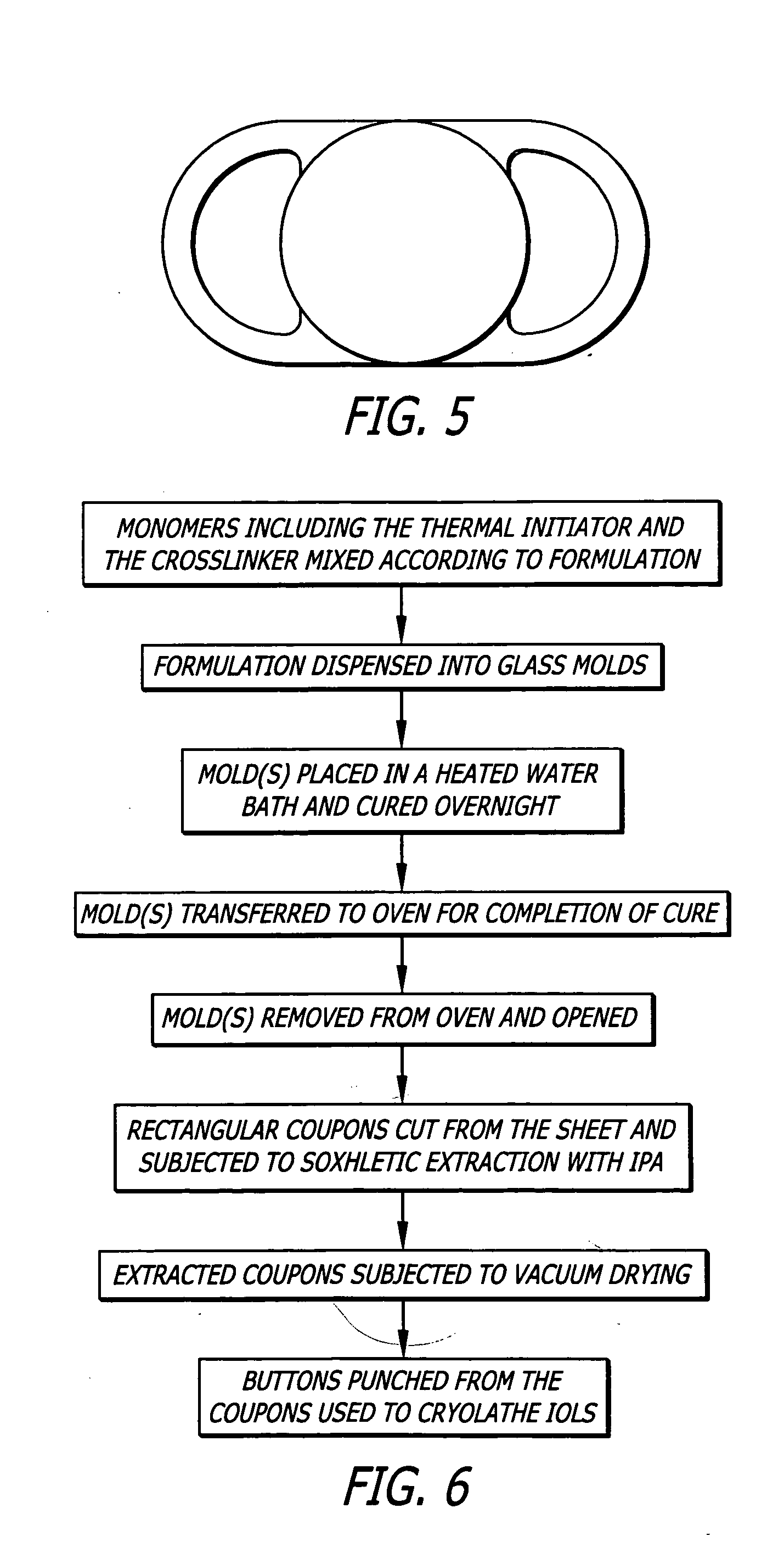Intraocular lens materials suitable for insertion through a small bore cartridge
a technology of flexible polymer and cartridge, which is applied in the field of intraocular lens materials suitable, can solve the problems of increasing procedural complexity and patent discomfort, the inability to manipulate intraocular lenses made from flexible polymers, and the nearly thirty-year wait of ophthalmologists to embrace, so as to achieve minimal cartridge crazing, no rupture, and low tensile strength
- Summary
- Abstract
- Description
- Claims
- Application Information
AI Technical Summary
Benefits of technology
Problems solved by technology
Method used
Image
Examples
example 1
[0034]
General formulation for one embodiment of the present inventionPhenoxyethyl acrylate (PEA)30-40weight percent (wt. %)Phenyl ether methacrylate (PEMA)15-25wt %Ethyl Acrylate (EA)25-35wt %Methyl methacrylate (MMA)5-15wt %1,4-butanediol divinyl ether (BDDVE)0.2-1.0wt %UV Blocker1.0-1.5wt %Luperox ®1 256 (thermal initiator0.1-0.5wt %2,5-dimethyl-2,5-di-(2-ethylhexanoyl-peroxy)hexane)HVS 1018022-7wt %
1 Luperox ® is a registered trademark of Arkema, Inc. Philadelphia, PA.
example 2
[0035]
General formulation for another embodimentof the present inventionPhenoxyethyl acrylate (PEA)45-55wt %Ethyl acetate (EA)15-25wt %Ethyl methacrylate (EMA)15-25wt %Divinyl silicone (DVS)5-15wt %Ethyleneglycol dimethacrylate (EGDMA)0.2-0.7wt %Tetraethyleneglycol dimethacrylate (TEGDMA)0.2-0.7wt %Trigonox ®2 141 (thermal initiator 2,5-0.5-1.5wt %Dimethyl-2,5-di-(2-ethylhexanoylperoxy)hexane)
2 Trigonox ® is a registered trademark of Akzo Chemicals, B.V. The Netherlands
[0036] The foregoing examples are meant to be illustrative. It is well known in the art that other initiators could be used in accordance with the teaching herein and combined with what is known in the art. Other suitable thermal initiators include, for example other organic peroxides. Moreover, it is understood that the ranges of monomers and other constituents in Examples 1 and 2 include all integers and fractions thereof within the ranges of the weight percents given. Furthermore, each formulation may have one or ...
example 3
[0038]
Formulation of Acrylate-SiliconeHybrid Polymer Number W-28-14SPEA34.2wt %PEMA19.5wt %EA29.3wt %MMA9.8wt %BDDVE0.5wt %UV Blocker1.2wt %Thermal Initiator0.3wt %HVS1018024.8wt %
[0039] The monomers, cross-linker, silicone fluid, initiator and other additives of Example 3 are mixed and processed into the intraocular lenses of the present invention according to the teachings here in as depicted in FIGS. 4, 5 and 6.
PUM
| Property | Measurement | Unit |
|---|---|---|
| elongation | aaaaa | aaaaa |
| tensile strength | aaaaa | aaaaa |
| tensile strength | aaaaa | aaaaa |
Abstract
Description
Claims
Application Information
 Login to View More
Login to View More - R&D
- Intellectual Property
- Life Sciences
- Materials
- Tech Scout
- Unparalleled Data Quality
- Higher Quality Content
- 60% Fewer Hallucinations
Browse by: Latest US Patents, China's latest patents, Technical Efficacy Thesaurus, Application Domain, Technology Topic, Popular Technical Reports.
© 2025 PatSnap. All rights reserved.Legal|Privacy policy|Modern Slavery Act Transparency Statement|Sitemap|About US| Contact US: help@patsnap.com



